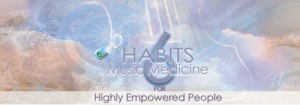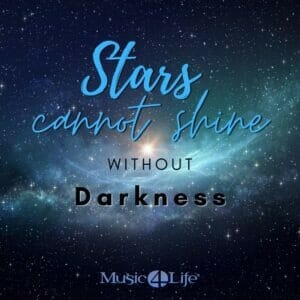
HABIT 2 – EMOTIONAL AWARENESS
Extended Activities
HABIT 2
Extended Activity 1
Learn about three danger zones related to stress.
First, identify your experience of stress. Is it eustress or distress, where the stress effects are either positive (eustress) or negative (distress).
The Chronic “Unsettled” Comfort Zone is where negative stress called “distress” is found. The feeling of being trapped in distress can be misinterpreted, labeling it something other than an unsettled mood. For instance, excessive anxiety may be called excitement. Anger may be interpreted as feeling energized. And depression or apathy may be referenced as feeling calm. These unsettled zones “mislabeled” are the most potent Chronic Comfort Zones as this entrapment can lead to road rage, active shooter incidents, suicide, violence and panic attacks.
The other two danger zones are Soothed and Energized.
The Chronic “Soothed” Comfort Zone desires only peace and may avoid all stress, could be entangled in dissociation, and may be repressing unsettled and/or energized moods.
The Chronic “Energized” Comfort Zone desires only happiness and may avoid all stress, could be entrapped in “grin and bear it” situations not resolving conflicts, and may be repressing unsettled and/or soothed moods.
Do you recognize these zones in yourself or someone else?
HABIT 2
Extended Activity 2
When you complete another Music4Life® Self-Assessment of U.S.E scores, notate identified conditions and emotional shape in your Music4Life Habits Journal (Habit 2, Activity 2). Remember your username and password which were created at THEMusic4Life.com to insert assessment results for Habit 1, Activity 3.
Read your assessment findings to understand your current Emotional Shape and develop Emotional Awareness by comparing your “Emotional Shape” drawn previously for Habit 1, Activity 3.
Notice if your two Emotional Shapes changed. Are you more stressed, relaxed or happy? More stress would be noticed in your Emotional Shapes as a higher “U,” and lower “S” and “E.” Whereas more relaxation and happiness would be noticed in your Emotional Shapes as a lower “U,” and higher “S” and “E.”
As you focus on developing Emotional Awareness, attempt to precisely identify your feelings. This will develop emotional literacy when you practice communicating how you feel to get your emotional needs met. This in turn improves emotional intelligence when practicing empathy and sharing emotional support.
HABIT 2
Extended Activity 3
Develop music listening skills by differentiating between passive and active listening. Active listening engages full attention without distraction. Passive listening does not focus on background music. Read about six music listening strategies for active listening in the article “Improve Music Listening Skills” at https://themusic4life.com/improve-music-listening-skills
Practice active music listening skills, observing how music deeply moves you. Improve Emotional Awareness and gain emotional literacy by communicating your feelings with others when sharing music.
HABIT 2
Extended Activity 4
Avoid losing yourself within intense emotions by building positive zones of affirmations and beautiful art as you connect to matching empowerment music.
When a situation arises that upsets you, identify your mood and reference these seven approaches to select one that feels right for your situation. Then, decide on an affirmation and match it with music to build your positive zone – mindset.
Seven Approaches
Here is an example from Music4Life’s “Power Up 365” (Day 71) where the graphic image, quote and music selection match for deeper positive reflection.
“Stronger” by Kelly Clarkson supports this quote and image:

HABIT 2
Extended Activity 5
Pre-plan your use of music (instead of something else) to transform three conditions you listed on (Habit 2, Activity 5). Journal your strategy with insights about results on the Music4Life® Habits Journal (Habit 2, Activity 5).
Here are some ideas of conditions to change using music instead of:
1) coffee or another stimulant to wake up or stay awake;
2) needing a sleep aid (caution: follow doctor’s orders for medications);
3) doing something else to reduce upsetness or detachment when stressed;
4) doing something else to maintain relaxation or happiness.
Write your insights answering these questions.
Pay attention to how your intentional planning of music choices affects you.
If you are instinctively self-medicating with music, the undesirable emotion may return after you stop listening. If you find this happening, just observe and journal about it.
There is a more intentional way of neutralizing unsettledness where prescriptive music listening habits result in feeling more peace and joy. This entails more circumspect expansion of your music preferences to escape toxicity and entrapment caused by excessive unsettledness. Find this entire discussion later in other Empowerment Habits.
Copyright 2022 Music 4 Life, Inc. All Rights Reserved.